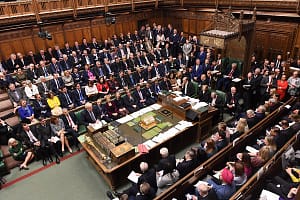The Office of tax Simplification proposals on CGT rules are dangerous and are a far cry from tax simplification, say leading tax and advisory firm Blick Rothenberg.
Nimesh Shah, CEO at the firm, said: “The Office of Tax Simplification (‘OTS’) today published its report on Rishi Sunak’s request to review Capital Gains Tax (‘CGT’). They contain a dangerous set of proposals to radically reform capital gains and are a far cry from simplification.
“The standout headline is the proposal to simplify CGT by aligning it to Income Tax rates. Is this really simplification, when the income tax system itself is complicated with various spikes and cliff edges in play? This is just a roundabout way of presenting an increase to CGT.”
He added: “I am disappointed by the conduct of the OTS in its handling of this review, which only serves to increase the tension around higher taxes, when it should be aimed at simplification.”
Nimesh said: “The OTS is straying into matters of tax policy rather than recommendations on simplification. The proposals contained in the report serve to complicate the existing CGT regime, rather than simplify it. Some of the areas that would be open to simplification, such as the computational aspects and operation of certain reliefs (such as main residence relief), are not considered in any detail.”
He added: “The other proposals include reducing the annual exemption, abolishing Business Asset Disposal Relief (the £1 million successor to Entrepreneurs’ Relief introduced at Rishi Sunak’s first budget) and Investors’ Relief, as well as removing the Capital Gains base cost uplift on certain assets upon inheritance following a person’s death.
Nimesh said: “In the latest available statistics from HM Revenue & Customs (HMRC), the Treasury raised £9.6 billion from CGT in 2018/19 against capital gains of £62.4 billion – the tax was paid by 276,000 individuals. Takings from CGT represent only c.1.5% of the total HMRC receipts. The Institute for Public Policy Research (IPPR) suggested last year that aligning CGT to Income Tax would raise £90 billion – this figure seems incredibly far-fetched in my view and the best estimate is that the Government would expect to see receipts double to around £20 billion (covering two months of furlough payments).”
He added: “As a basic example, an individual who is an additional rate (45%) taxpayer realising a capital gain of £500,000 on the sale of a property would pay an additional £85,000 in tax. A pensioner who is a basic rate taxpayer selling some quoted shares realising a capital gain of £10,000 would see their tax bill double to £2,000. (These examples assume the personal allowance and capital gains annual exemption are fully utilised elsewhere.)
“The simplest CGT regime would involve a single flat rate, which is what we had in 2008/09 and 2009/10 when there was an 18% rate of CGT. There are currently five different rates which could apply, and this is the main point which needs to be addressed, and disappointingly isn’t considered in the OTS report.”
Nimesh said: “Any such radical reform of CGT needs to be coupled with an equal reform of Inheritance Tax – one should not be altered so dramatically without consideration to the other.”






Leave a Comment